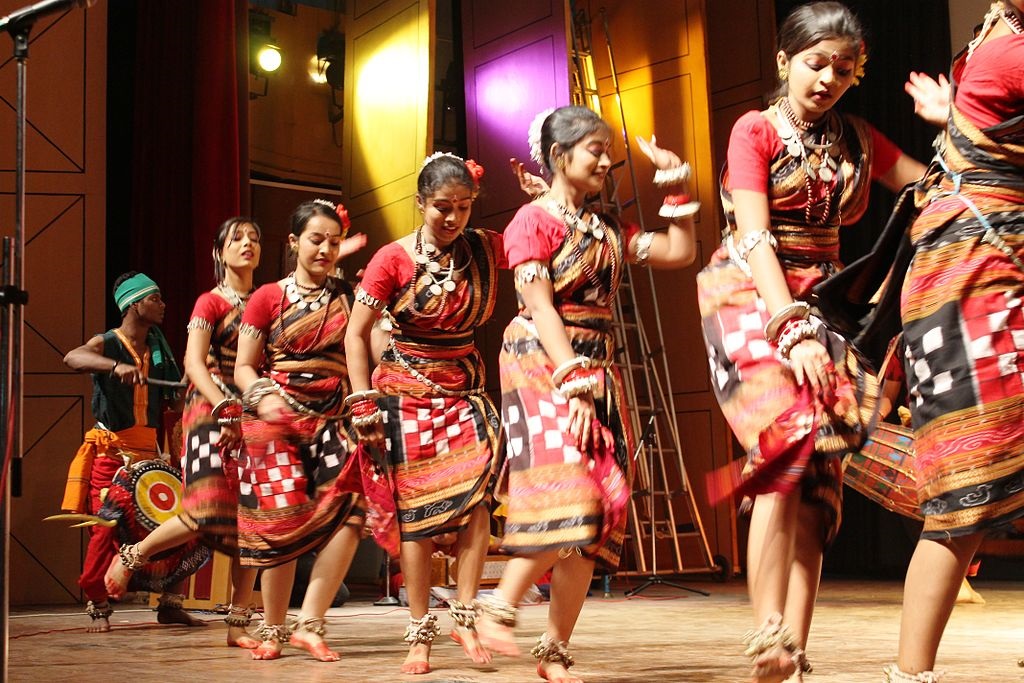The harvest season calls for many celebrations in the state of Jharkhand. One such festival, celebrated by the Munda tribe of Jharkhand, is known as Karma.

The neighboring states of Madhya Pradesh, Chattisgarh, West Bengal, and Orissa also celebrate the Karma festival.
Karma Festival Celebration
Karma festival’s major attraction is the performance of the Karma Munda dance. It is a celebration of the rainy season in August and September. The Hindu calendar period of Bhadra is the harvest period in India. The Karma festival is celebrated on the eleventh day of this month.
Rituals, songs, and dance are the three primary elements that constitute the Karma festival. The main ritual is the worship of the Karma or Kadamba tree, considered to be holy by the Munda people. People enjoy songs and dance performances throughout the evening after the rituals.
Karma Dance Performance
Both men and women take part in the Karma dance. Karma dance has two types of formations. In one form, the dancers make small circles around plantations of the Karma tree and dance.
The dancers form a chain holding each other from behind the waist and perform a rhythmic movement. The male dancers are usually in the middle of the formation, and they play musical instruments. As they move around, a branch of the Karma tree is passed around.
The branch should not touch the ground till the end of the performance. The same branch is raised again for further performance.
In the other formation, dancers form straight lines with hands behind each other’s shoulders or waist. The movements are the same in both formations.
Munda tribe performs Karma dance in three varieties known as Lashna Karam, Khemta Karam, and Bensari.
Karma dance involves steps that can be performed only after a rigorous practice. Hence, only professional dancers take part.
Costume Used in Karma Dance
The women Karma Naach dancers wear white sarees with red borders. The saree ends slightly below the knee. The pallu is wrapped around the waist. Ornaments include bangles, bead necklaces, silver anklets, and earrings. The hair is tied up into a bun and is adorned with flowers and feathers.
The men wear white dhoti and white shirt. A colourful cloth is tied around the waist. A beautiful white and gold turban is tied around the head. On one side of the turban, a feather is nicely tucked in. The dancers who also play the Dholak, wear wrist bands made of flowers.

Pingback: All Folk Dances of India - Auchitya
Pingback: All Folk Dances of India - Auchitya